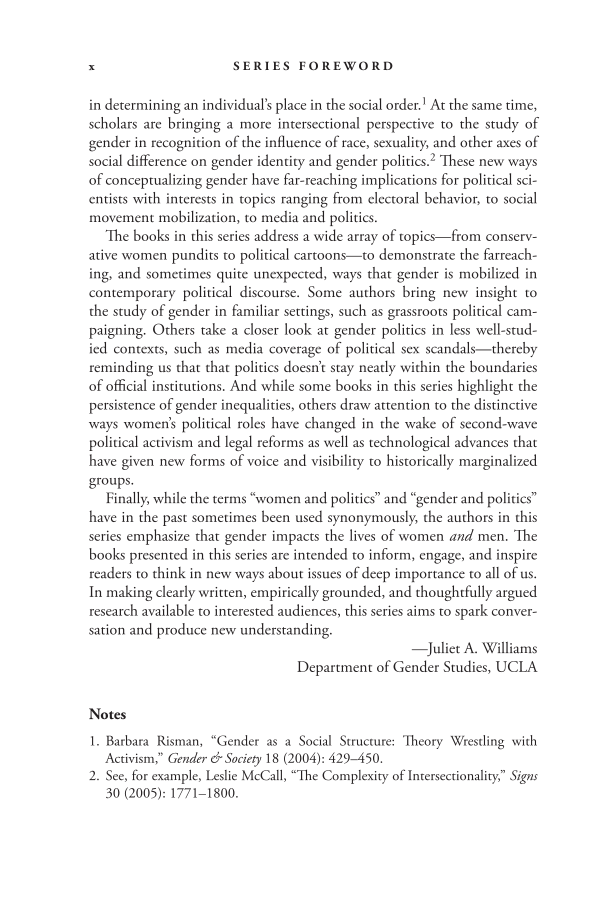x S e r i e s F o r e w o rd in determining an individual’s place in the social order.1 At the same time, scholars are bringing a more intersectional perspective to the study of gender in recognition of the influence of race, sexuality, and other axes of social difference on gender identity and gender politics.2 These new ways of conceptualizing gender have far-reaching implications for political sci- entists with interests in topics ranging from electoral behavior, to social movement mobilization, to media and politics. The books in this series address a wide array of topics—from conserv- ative women pundits to political cartoons—to demonstrate the farreach- ing, and sometimes quite unexpected, ways that gender is mobilized in contemporary political discourse. Some authors bring new insight to the study of gender in familiar settings, such as grassroots political cam- paigning. Others take a closer look at gender politics in less well-stud- ied contexts, such as media coverage of political sex scandals—thereby reminding us that that politics doesn’t stay neatly within the boundaries of official institutions. And while some books in this series highlight the persistence of gender inequalities, others draw attention to the distinctive ways women’s political roles have changed in the wake of second-wave political activism and legal reforms as well as technological advances that have given new forms of voice and visibility to historically marginalized groups. Finally, while the terms “women and politics” and “gender and politics” have in the past sometimes been used synonymously, the authors in this series emphasize that gender impacts the lives of women and men. The books presented in this series are intended to inform, engage, and inspire readers to think in new ways about issues of deep importance to all of us. In making clearly written, empirically grounded, and thoughtfully argued research available to interested audiences, this series aims to spark conver- sation and produce new understanding. —Juliet A. Williams Department of Gender Studies, UCLA Notes 1. Barbara Risman, “Gender as a Social Structure: Theory Wrestling with Activism,” Gender & Society 18 (2004): 429–450. 2. See, for example, Leslie McCall, “The Complexity of Intersectionality,” Signs 30 (2005): 1771–1800.
Document Details My Account Print multiple pages
Print
You have printed 0 times in the last 24 hours.
Your print count will reset on at .
You may print 0 more time(s) before then.
You may print a maximum of 0 pages at a time.









































































































































































































































